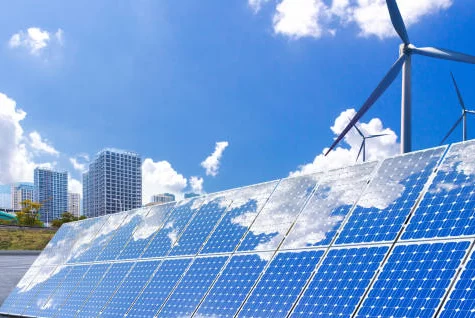The Applications, Construction Costs and Future Cost Trends of Microgrids in Daily Life
In the contemporary world, as the demand for reliable and sustainable energy supply continues to escalate, microgrids have emerged as a significant topic in the energy domain.

The applications of microgrids in our daily lives are increasingly diverse. They play a crucial role in household energy management. Some families have installed solar panels and energy storage devices to establish a micro grid. This setup can meet part or all of the household’s electricity demands, reducing electricity bills and ensuring the operation of critical appliances such as lighting and refrigerators during power outages. For instance, in sunny regions, families with microgrid systems can generate electricity from solar power during the day and store excess energy for use at night to power lights and other appliances.
Community energy sharing is another common application. Multiple households or buildings can be connected through a micro grid to share the electricity generated from renewable sources, enhancing energy utilization efficiency. For example, several residential buildings within a community can jointly install solar power generation facilities and energy storage systems, and the generated electricity can be distributed based on demand within the community.
Microgrids are also valuable for small-scale commercial facilities like small supermarkets, coffee shops, and hair salons. By establishing a micro grid, these businesses can reduce their reliance on the external power grid, stabilize the power supply, and minimize business losses caused by power outages. For instance, a small supermarket with a micro grid system can continue operating normally during grid failures, ensuring the functioning of refrigeration systems for storing perishable goods and the operation of cash registers.
In rural areas, where the reach of the main power grid may be limited, microgrids provide a reliable source of electricity. They can utilize local renewable energy sources such as wind, solar, and small-scale hydropower to meet the basic electricity needs of rural residents for daily life and agricultural production. For example, in some remote rural areas, the introduction of microgrids has enabled access to electricity, allowing villagers to use electrical appliances for lighting, watching television, and charging agricultural equipment.
Moreover, microgrids serve as an essential emergency power supply during natural disasters or other unforeseen circumstances. They can provide power support to critical facilities such as hospitals, shelters, and communication base stations. For example, during an earthquake, temporary shelters equipped with microgrid systems can guarantee the electricity supply for lighting, communication devices, and medical equipment.
However, the construction of microgrids currently comes with a relatively high cost. This is attributed to several factors. The control systems required for microgrids are complex and expensive. The investment in energy storage systems is substantial. These systems, often including batteries and associated management equipment, can account for a significant portion of the overall cost. Additionally, there are costs associated with the operation and maintenance of the microgrid over its lifespan.
The technologies involved in microgrids, such as power electronics, computer control systems, and communication technologies, also contribute to the overall cost. The development and implementation of these advanced technologies require significant research and development efforts, as well as specialized equipment and expertise, all of which add to the expense.
Nevertheless, there is optimism that the construction costs of microgrids are likely to decrease with technological advancements. In the field of energy storage, ongoing research and large-scale production are expected to drive down the costs of batteries. More efficient, longer-lasting, and less expensive energy storage devices will reduce the investment required for the energy storage component of microgrids. The continuous improvement in lithium-ion battery technology and the expansion of production scales have already led to a notable reduction in unit costs.
Advances in power electronic devices are also contributing to cost savings. More efficient, smaller, and more affordable inverters, controllers, and other power electronic components are reducing the costs associated with power conversion and control in microgrid systems.
The progress in renewable energy generation technologies, such as the increasing efficiency and decreasing manufacturing costs of solar panels and wind turbines, is reducing the expenses related to energy production in microgrids. For instance, the efficiency of solar panels has been steadily improving, while their production costs have been declining, resulting in lower costs per unit of electricity generated.
Furthermore, the development of intelligent management and monitoring technologies is enabling more precise control and optimization of microgrid operations. This leads to reduced energy waste and equipment wear and tear, thereby lowering the long-term operational and maintenance costs.
While the extent of cost reduction is influenced by factors such as fluctuations in raw material prices, changes in market demand, and policy and regulatory frameworks, the overall trend of technological progress provides strong support and potential for lowering the construction costs of microgrids.
For example, in some regions, the unit cost of microgrid construction has decreased by 10% to 20% over the past few years, primarily due to the aforementioned technological advancements and increased market competition.
In conclusion, although the exact magnitude and pace of cost reduction for microgrid construction are uncertain, technological progress offers promising prospects for reducing costs. As costs decline, microgrids are expected to find wider applications in our daily lives, providing more convenient and sustainable energy supplies. The future of a micro grid looks promising, and they are set to play an increasingly vital role in the energy landscape.
